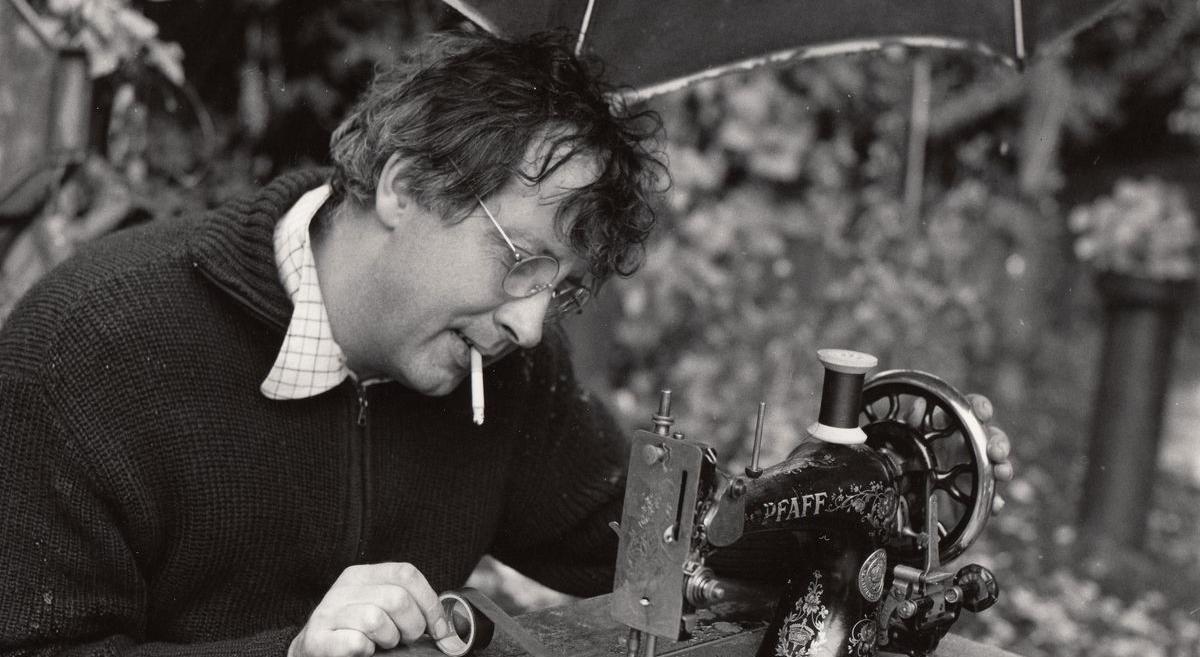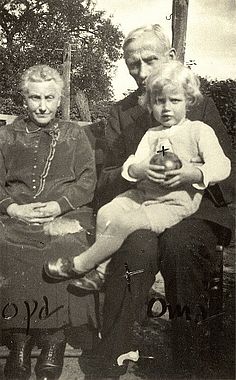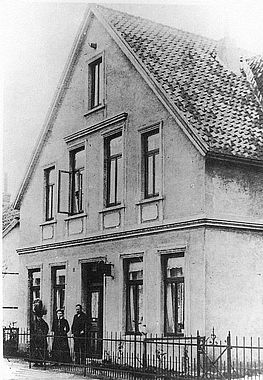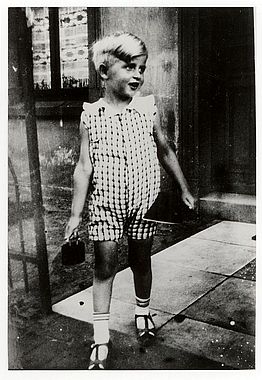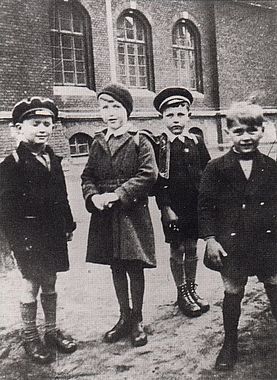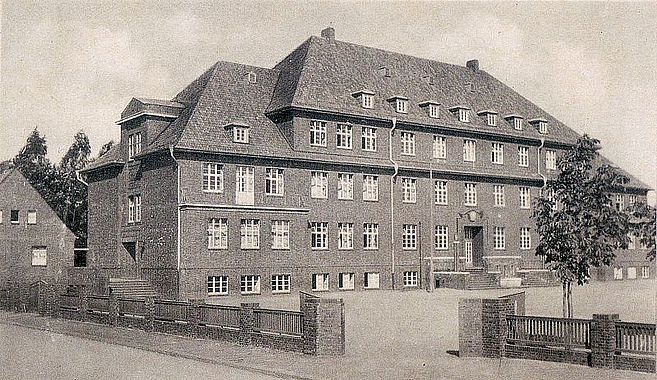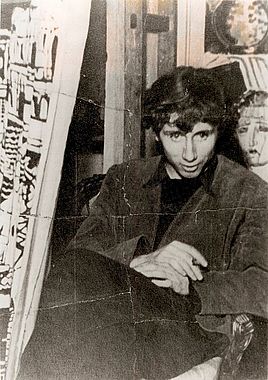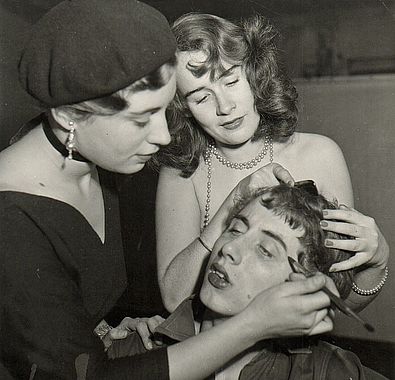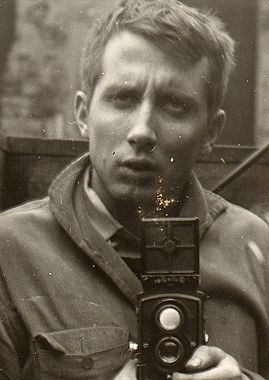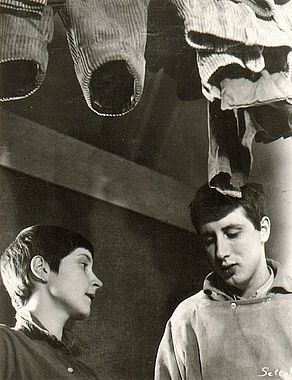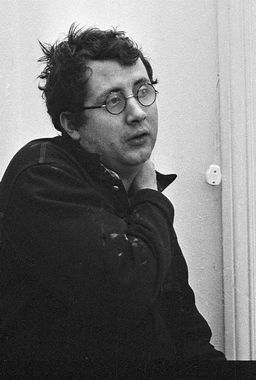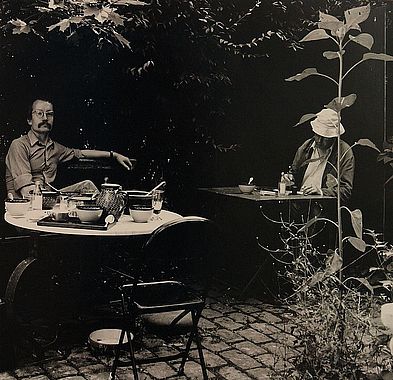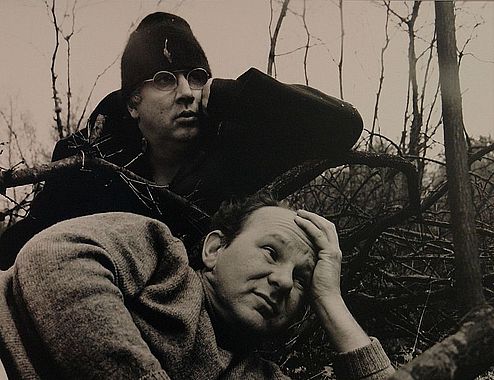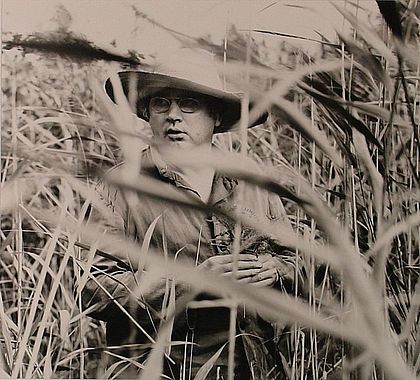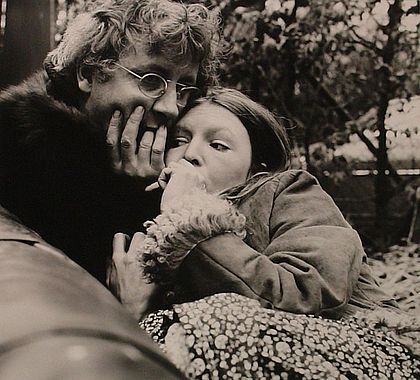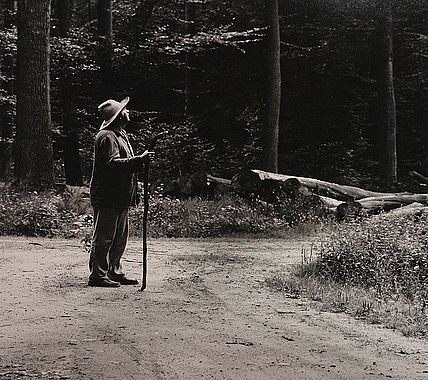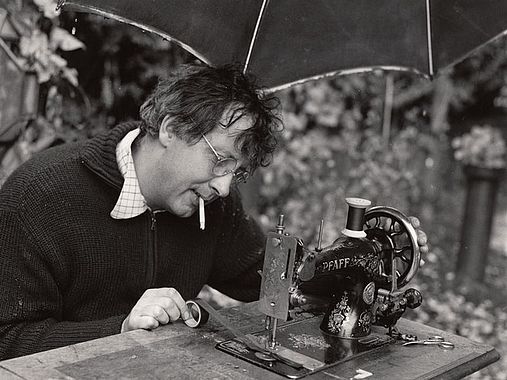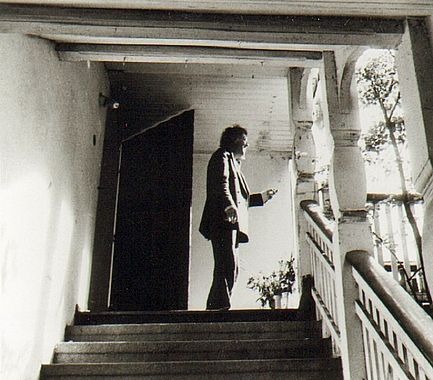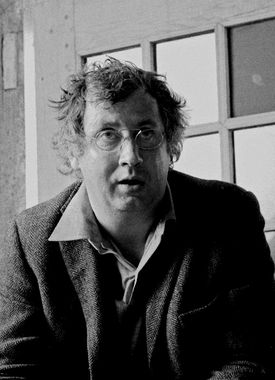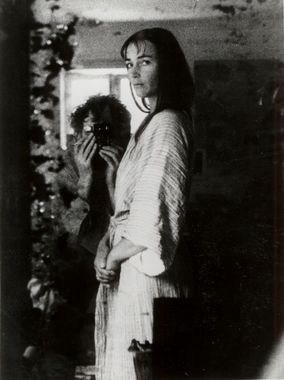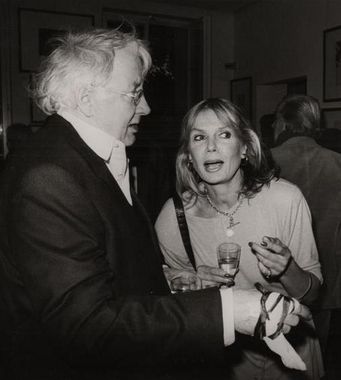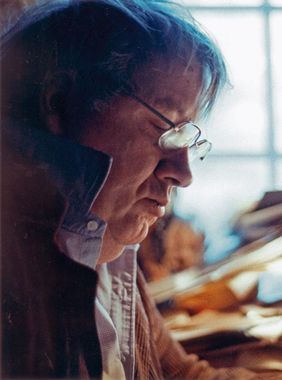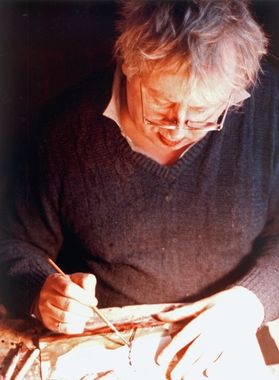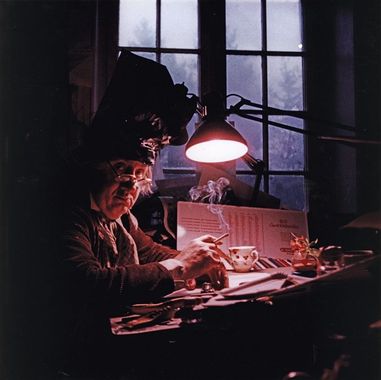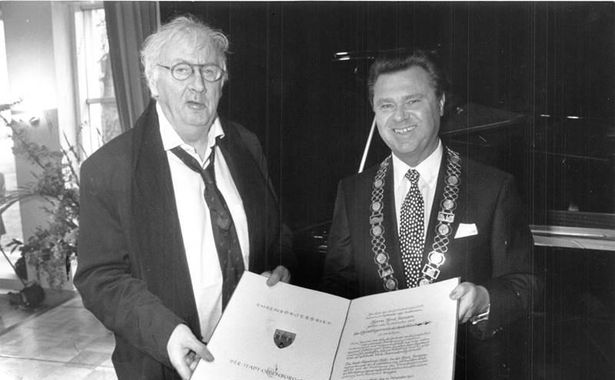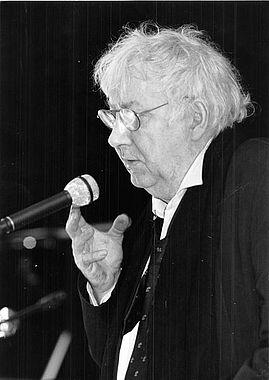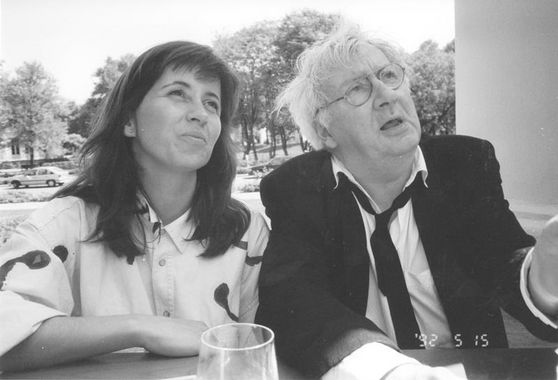Horst Janssen – Life
Childhood and Youth
| 1929 | On 14 November, Horst Janssen was born in Wandsbek near Hamburg. He is the illegitimate child of seamstress Martha Janßen and the Swabian Gerhard Karl Bauder. Janssen grew up with his mother’s parents in Oldenburg. Fritz Janßen, a master tailor, adopts his grandson. There will never be any contact with his father. |
| 1937-1941 | In Oldenburg, Janssen attends the primary school Röwekamp, the Heiligengeisttorschule and later the secondary school Margaretenstraße (today's Paulus-Schule). |
| 1939 | Death of grandfather. |
| 1942-1945 | Janssen becomes a student at the National Political Institute of Education (Napola) in Haselünne, Emsland. There he is particularly supported by Hanns Wienhausen, a drawing teacher. |
| 1943 | Death of mother. |
| 1945 | Taken in in war-ravaged Hamburg by Anna Johanna, “Tantchen” (Auntie), his mother’s sister, who had adopted him in 1944. At first they lived on Burchardstraße, later on Warburgstraße (Harvestehude). |
Course of Studies
| 1946-1951 | Student with Alfred Mahlau in the class for free and applied graphics at the Landeskunstschule Hamburg, today’s HFBK. |
| 1947 | First autodidactic expressionistic experiments with the woodcut technique. |
| 1950 | Birth of son Clemens, who grows up with his mother’s family, Gabriele Gutsche. |
| 1951 | Scholarship by the German Academic Scholarship Foundation. |
| 1952 | Lichtwark scholarship; he leaves the Landeskunstschule against his own will. |
The 1950s
| 1952-1960 | Commissioned works (including oil paintings) for Guido Dessauer, manufacturer of coloured paper in Aschaffenburg. First involvement with lithography. |
| 1953 | Charged with attempted murder out of jealousy of Judith Schlottau (wife of his friend Günter Schlottau and Janssen’s lover from autumn 1952 to October 1953). |
| 1955 | Marriage to Marie Knauer. |
| 1956 | Birth of daughter Kathrin, called “Lamme”. |
| 1957 | First “Flur” (hallway) exhibition at Warburgstraße 33 with large-format woodblock prints, with which Hans Brockstedt, Janssen’s gallerist, achieves initial sales successes in Hanover. |
| 1959 | Divorce from Marie Knauer. |
The 1960s
| 1960 | Marriage to Verena von Bethmann Hollweg and birth of their son Philip in 1961. |
| 1964 | Art prize of the City of Darmstadt. |
| 1965-67 | First comprehensive exhibition at the Kestner Gesellschaft, Hanover. From January 1966 until January 1967, the exhibition tours to Hamburg, Darmstadt, Stuttgart, Berlin, Düsseldorf, Lübeck, Basel and Munich. |
| 1967 | Death of Janssen’s aunt Anna and his esteemed teacher Alfred Mahlau. |
| 1968 | Invitation to the 34th Venice Biennale, together with Richard Oelze and Gustav Seitz. Janssen receives the Grand Prize in graphic art. |
| 1969 | Divorce from his third wife Verena. |
The 1970s
| 1969-1972 | Travels to Scandinavia and Tessin accompanied by Gesche Tietjens. |
| 1972 | Short love affair with Roswitha Harting, whom Janssen meets on his second trip to Tessin. |
| 1973 | Second Janssen exhibition at the Kestner Gesellschaft, Hanover. |
| 1974 | Beginning of relationship with Birgit Jacobsen. |
| 1975 | Schiller Prize of the City of Mannheim. |
| 1976 | Separation from Birgit Jacobsen. |
| 1978 | Poster exhibition at the Stadtmuseum Oldenburg. |
| 1978-79 | Relationship with Kerstin Schlüter. |
The 1980s
| 1980 | Exhibitions at the Art Institute of Chicago and the Busch-Reisinger Museum, Cambridge, USA. |
| 1981 | The publication “Querbeet” (At random) with essays, speeches, treatises, pamphlets, short stories, poems and ribaldries is a collection of Janssen’s literary works since 1950. |
| 1982 | Exhibitions at the Albertina, Vienna, the Museum of Art and Design Hamburg (MK&G), the Museum of Modern Art, Kamakura, the Isetan Museum, Tokyo, and the Munch Museum, Oslo. |
| 1983-1985 | Touring exhibition in the USA. |
| 1984 | Stefan Blessin self-publishes a first Janssen biography, after Janssen banned a publication by the publishers Hoffmann und Campe. |
| 1985 | Exhibitions in Novosibirsk and Moscow, initiated by the Göttingen collector Tete Böttger. At the end of 1985, the eight-month love relationship with Annette Kasper, almost 36 years his junior, begins. |
| 1986 | A second comprehensive collection of texts is published by dtv-Verlag in Munich: “An und für mich.” (In and of myself. Selfish, epistolary, poetic, sardonic, declamatory, spoken matters and everything printed 1981-1986). |
| 1987 | The first volume of the Janssen autobiography “Hinkepott” (Hinkepott. Autobiographic friskery in letters and essays) is published by Merlin Verlag. |
| 1989 | The second volume of his autobiography is published: “Johannes” (Johannes. Illustrated letters ‘Hinkepott II’. Morning greetings, night thoughts, confessions, reminiscences, entanglements and misbehaviours), again by Merlin Verlag. |
The 1990s
| 1990 | On the morning of 19 May, Janssen crashes through the boards of the rotten balcony in front of his house. Acid from the etching bathtubs burns his eyes, Janssen is in danger to lose his eyesight. His new girlfriend Heidrun Bobeth accompanies Janssen during the healing period and inspires him to create the “Bobethanien” (Bobethania) series comprising 100 landscape watercolours. Moreover, he comes to terms with the misfortune and his recovery in “Der Foliant” (The folio. An exhibitionistic documentation of the accident’s history). |
| 1991 | Exhibition of the “Bobethanien” landscapes at the Albertinum in Dresden. |
| 1992 | Honorary citizenship of the City of Oldenburg. |
| 1994 | On the occasion of his 65th birthday, the Hamburger Kunsthalle, the Museum of Art and Design Hamburg and the Altonaer Museum simultaneously present Janssen exhibitions. |
| 1995 | Following several strokes Janssen dies after hospitalisation and rehabilitation on 31 August at Mühlenberger Weg. Burial at the Gertrud cemetery in Oldenburg. |
| 2000 | In November, the Horst-Janssen-Museum in Oldenburg opens. The establishment of a Janssen Museum in Hamburg failed in 1989. |
